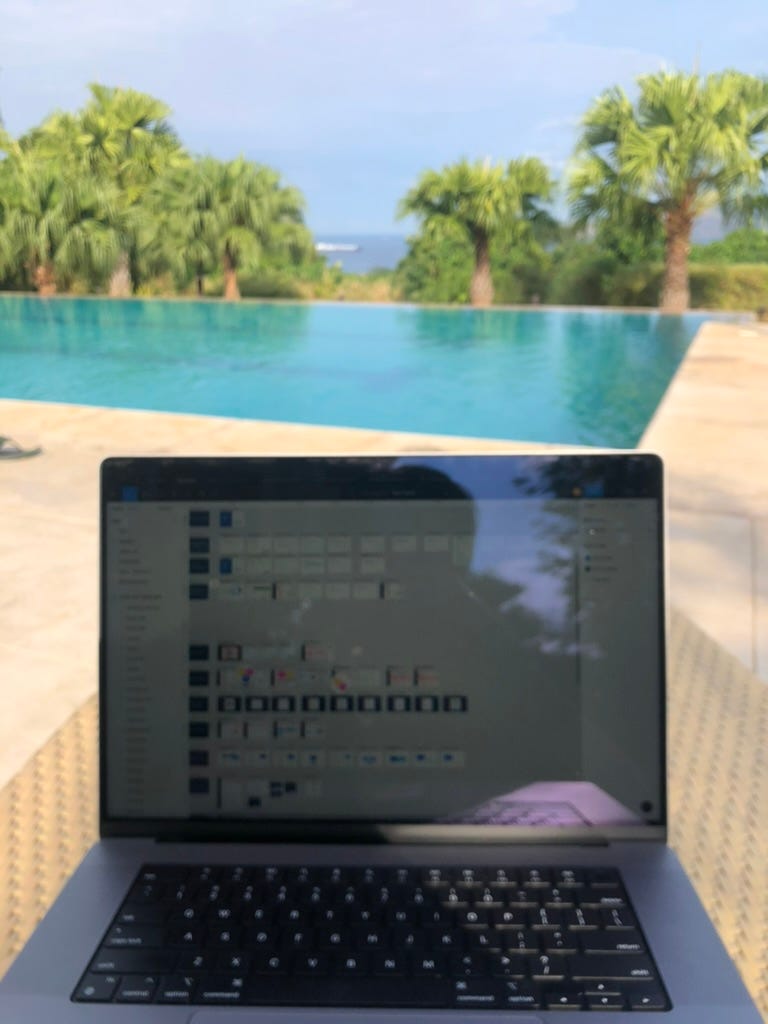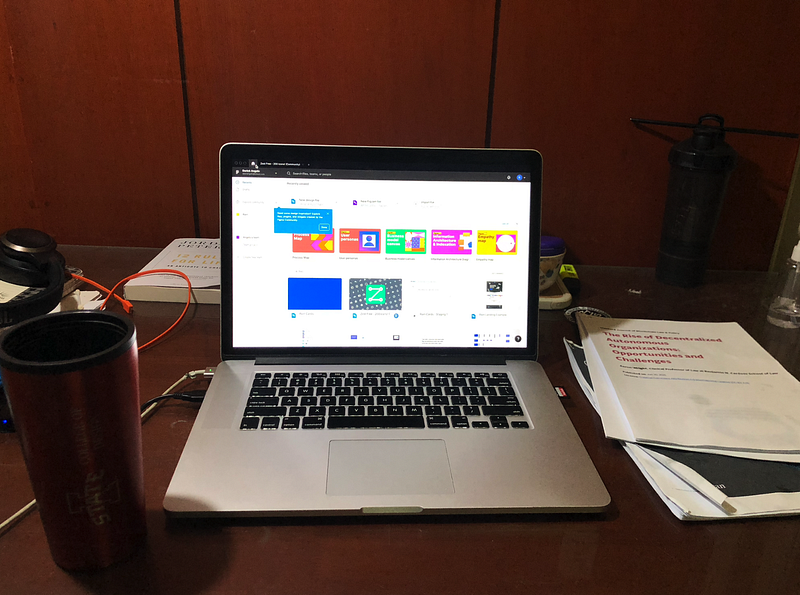Exploring Life as a Digital Nomad in the World of Tech
Written on
Chapter 1: The Future of Work
In my perspective, the future of work lies in the realm of digital nomadism. It's about existing in a space without limitations or borders. Humans thrive on exploring various cultures and environments, which fuels our creativity and intellectual growth.
According to Investopedia, digital nomads are individuals who leverage technology to work from anywhere, living a lifestyle free from fixed locations. They engage in remote work, avoiding the necessity to be physically present in an office.
Imagine a world where we can travel and reside in stunning locations while pursuing our passions. Technology, especially through innovations like Web3, is pivotal in making this vision a reality.
Working in Tech and Web3
Greetings! I’m Derick, a designer, content creator, and tech entrepreneur from the Philippines and Italy. Currently, I’m based in the Philippines, working as a product designer for a New York City web3 startup supported by Coinbase Ventures. Previously, I was the founding designer for a startup in San Francisco backed by Y Combinator.
Web3 empowers individuals to control their contributions and projects no matter where they are. The remote work trend is set to rise as Web3 continues to develop, and I couldn't be more excited about it.
This is a glimpse into my day as a remote worker in the Web3 space. I typically wake up at 8 AM and check my emails and Discord messages for any urgent matters, which usually takes less than 10 minutes before I dive into breakfast.
With remote work, I enjoy flexible hours. However, I often find myself working late at night, from 10 PM to 2 AM, to align with my team's schedules. My morning ritual includes enjoying a doppio espresso made with my trusty Nespresso machine.

I start my workday at 9 AM and continue until 1 PM. Currently, I’m focused on a business banking initiative aimed at crypto-native firms. I rely heavily on Figma for design collaboration, as my role involves ideating, prototyping, and testing design solutions.

Our team's remote collaboration thrives on tools like Figma, Zoom, Notion, and Discord. Lunchtime is at 1:30 PM, with my family preparing meals that are always ready when I am.

On occasion, if the food isn’t to my taste, I opt for online delivery through Grab or FoodPanda, similar to DoorDash or Postmates in the U.S. I typically order food 3-4 times a week, sometimes even late at night!
In the afternoons, I tend to work less and often take a two-hour nap, waking up around dusk. This is when I feel most productive, so I take full advantage of those hours.
From 7 PM onward, I resume working for another 2-3 hours before taking a break. The beauty of flexible hours is that I can tailor my work around my lifestyle while meeting deadlines. A significant portion of my research involves studying the Web3 ecosystem, requiring me to read extensively.
Standup meetings occur around midnight, where my team and I connect to share updates and gather feedback on my designs. I make sure to implement constructive feedback promptly in subsequent iterations. Occasionally, I find myself working late into the night, often until 3-4 AM.

Working remotely has its incredible perks, such as the ability to work from anywhere. Here's a snapshot from a recent family getaway.

Pros and Cons of Remote Work
While remote work has its advantages, it’s not without challenges. Since the pandemic began in 2020, many have faced mental health issues due to isolation and the shift to remote work.
Does that mean working from home is detrimental? Not at all. It takes time to adapt to a new lifestyle, and initially, the transition can be uncomfortable as we figure out effective practices to maintain our mental well-being.
Remote work allows for a nomadic lifestyle, enabling you to share your skills and ideas globally, something that wasn’t feasible just two decades ago. All you need is a computer, internet access, and your creativity.
The benefits of remote work include:
- More time for professional and personal projects
- Greater flexibility in lifestyle and work hours
- The ability to spend time with loved ones or travel to exotic locations
- Potential for financial savings based on lifestyle choices
However, drawbacks can include:
- Possible declines in productivity
- Distractions from changes in environment
- Limited access to sunlight and exercise, leading to stress or depression
- Risk of burnout from extended working hours
- Reduced social interaction, which can disconnect you from reality
Overall, the benefits far outweigh the downsides. It may take some time to adjust, but remote work is undoubtedly the future.
What I Miss About City Life
Though I’m from the Philippines, I grew up in Bologna, Italy—a true haven for food lovers. It's where my family and I immigrated over a decade ago, and the city is renowned for its pasta, cheeses, and wines.
Bologna is where I completed my secondary education and embarked on my tech career as a web designer. It’s also home to the University of Bologna, the oldest university in the Western world, giving the city a vibrant, youthful energy.
What I deeply miss about city life in Bologna is the engaging interactions with fascinating individuals and the vibrant atmosphere, reminiscent of New York City's energy and hustle. The ambition and creativity of the people there are what I miss the most—along with the food!
However, I don’t miss the constant noise during evenings and late nights, which made getting a good night's sleep a challenge.
Advantages of Remote Living
City living can be pricey. I once resided in one of Italy's most expensive areas, with high costs for rent and daily expenses.
Now, living in the Philippines has its perks:
- Lower expenses, allowing for greater savings
- Living with family, which eliminates rental costs
- Access to beautiful natural surroundings and tropical weather
My family often takes monthly trips to nearby beaches or parks, allowing us to unwind and enjoy quality time together, a fantastic way to escape reality.
Productivity can also increase in this serene environment, provided I maintain a healthy diet, exercise, and rest well. The quiet of a remote location significantly enhances focus.
Stress can be managed through social interactions, mindfulness, and ensuring you take time for yourself, even when you love your work.
Conclusion
Thank you for joining me on this exploration of my life as a professional in Web3. Since the pandemic, many have transitioned to remote work, and while the change was initially met with resistance, many have found joy in this lifestyle—including myself!
There’s so much one can accomplish, not just in one’s primary job but also through side projects. Achieving work-life balance is easier in this setup, allowing for travel and adventure.
Are traditional offices and coworking spaces becoming obsolete? Only time will tell. However, one thing is certain: I’m living my best life while doing what I love—creating exceptional design experiences for users. You can do this too!
Let’s connect! Find me on Twitter at:
This video showcases a day in the life of a digital nomad, detailing their unique experiences and challenges.
This video provides insights into the life of a tech content creator and digital nomad, offering a glimpse into their daily routine and work-life balance.